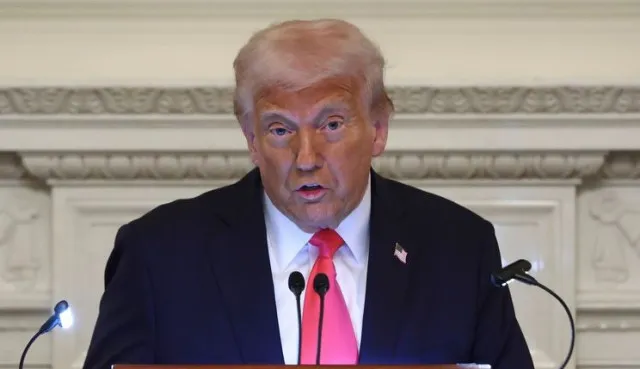An online theory explaining how Trump calculated tariff rates for each country has gone viral, sparking widespread debate.
On April 2, 2025, President Donald Trump announced a series of new tariffs affecting imports from various countries.
These tariffs include a baseline 10 percent tax on nearly all goods, along with higher “reciprocal” tariffs for specific nations.
This decision has led to widespread discussion and speculation online about how these rates were calculated.

Methodology behind the tariff calculations of President Trump
The Office of the United States Trade Representative stated that the tariffs were designed to balance trade deficits between the U.S. and its trading partners.
However, financial journalist James Surowiecki expressed skepticism about this approach.
“Just figured out where these fake tariff rates come from. They didn’t actually calculate tariff rates + non-tariff barriers, as they say they did.
Instead, for every country, they just took our trade deficit with that country and divided it by the country’s exports to us.”
He analyzed the methodology used to determine the tariff rates and found it lacking.

Surowiecki explained that the calculation did not take into account various factors, such as non-tariff barriers.
Instead, it simply divided the trade deficit the U.S. has with each country by that country’s exports to the U.S.
Surowiecki provided an example: “So we have a $17.9 billion trade deficit with Indonesia. Its exports to us are $28 billion. $17.9/$28 = 64%, which Trump claims is the tariff rate Indonesia charges us.”
This leads to a calculated tariff rate of 64 percent, which he deemed “extraordinary nonsense.”
The tariff calculation process faced significant criticism and skepticism.
The financial journalist further pointed out that the calculations only considered trade in goods, ignoring the fact that the U.S. has a trade surplus in services.
This oversight raises questions about the accuracy and fairness of the proposed tariffs.

He further noted: “This tweet is correct, but it’s actually worse than I thought: in calculating the tariff rate, Trump’s people only used the trade deficit in goods.
So even though we run a trade surplus in services with the world, those exports don’t count as far as Trump is concerned.”
In response to the criticism, Deputy White House Press Secretary Kush Desai claimed that the administration did calculate both tariff and non-tariff barriers.
The new tariffs triggered significant reactions in the markets.
The introduction of these tariffs has caused significant reactions in global financial markets.
Following the announcement, the FTSE 100 index in the UK experienced its largest one-day drop since August, falling by 1.5 percent.
U.S. stock indices, including the Nasdaq, saw declines of up to 4.5 percent, resulting in the loss of trillions in global market value.
The volatility in the markets reflects deep concerns among economists and global leaders regarding the potential for a trade war.
Many analysts warn that these tariffs could lead to a recession, impacting economies worldwide.

Global concerns arise over possible retaliatory actions from nations.
The World Trade Organization has expressed serious concerns about the new tariffs, echoing fears from various countries.
The European Union, the United Kingdom, and China have all indicated that they may take retaliatory measures in response to the tariffs.
This potential for retaliation further complicates the already tense trade relationships between the U.S. and other nations.
As the tariffs are set to be implemented on April 5, 2025, the global economic community is closely monitoring the situation.
Many are calling for clarity from the Trump administration regarding the rationale behind these tariffs and their expected impact.